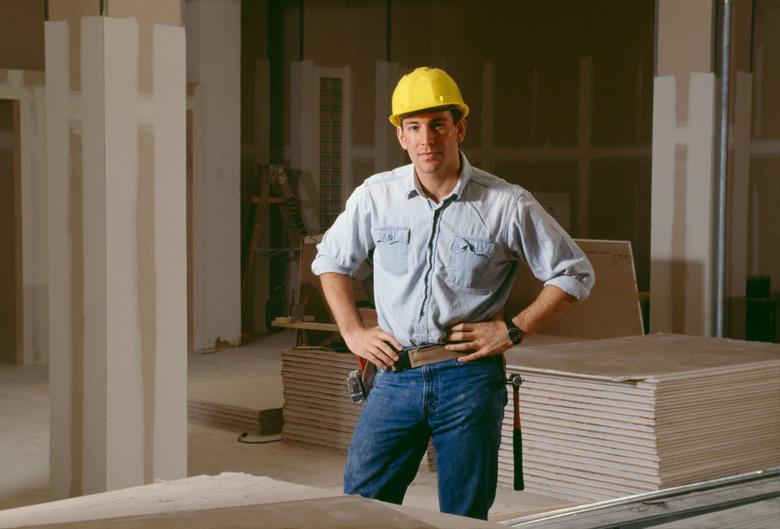Alternatives To Drywall Tape
Using paper drywall tape to cover the joints where two panels of drywall meet is standard in drywall finishing. But there are many alternatives out there, each with different advantages and disadvantages. Some types of tape work best only for very specific applications, so check the product packaging to make sure an alternative tape will work for your construction project before testing it.
Mesh Tape
Fiberglass mesh tape offers a few advantages. First, it is easy to use. Just tear a piece off the roll and lay it on a layer of wet joint compound. Wipe it flat with your drywall tool. Then let it dry.
The second advantage of fiberglass mesh tape is it conforms well to oddly-shaped surfaces. For example, if you want to reinforce a round edge, lay a piece of fiberglass mesh tape on it and smooth it flat. Paper drywall tape, on the other hand, wrinkles easily.
The chief disadvantage of fiberglass mesh tape is that joints covered in only mesh tape tend to crack over time. While mesh tape certainly reinforces the strength of the joint compound, it doesn't provide as cohesive a bond with the joint compound as paper drywall tape does.
Vinyl-Paper Composite Tape
A newcomer on the scene, vinyl-paper composite tape has changed how difficult angles are finished. Years ago, drywall finishers would have to use a chalk line to establish a straight line across tough angles and crooked corners. But now drywall finishers simply cut a length of stiff, cardboard-like vinyl-paper composite tape and embed it in wet joint compound. The vinyl-paper composite tape forms a perfectly straight line, leaving even the toughest angles clean and sharp.
Vinyl-paper composite tape has two main disadvantages. First, it is very expensive. A single roll of the tape can cost $20 to $30. In contrast, paper drywall tape costs only $2 to $4, depending on brand. Second, vinyl-paper composite tapes tend to dislodge over time. Due to the tape's stiffness, seasonal shifts in temperature and moisture levels cause vinyl-paper composite tapes to crack and separate from the joint compound they are embedded in.
Metal Tape
Metal tape is the best product for covering wide-angle outside joints. It consists of two strips of metal glued to a paper drywall tape. Although new vinyl-paper composite products are emerging in the drywall-supply market that claim to cover wide-angle joints just as well as metal tape, many professionals still use metal tape. It is relatively inexpensive compared to newer products, and easier to install. Just cover the outside angle with joint compound, place a length of metal tape over it, and pinch the metal tape into place. Apply a few heavy coats of joint compound, and the wide angle is finished.
